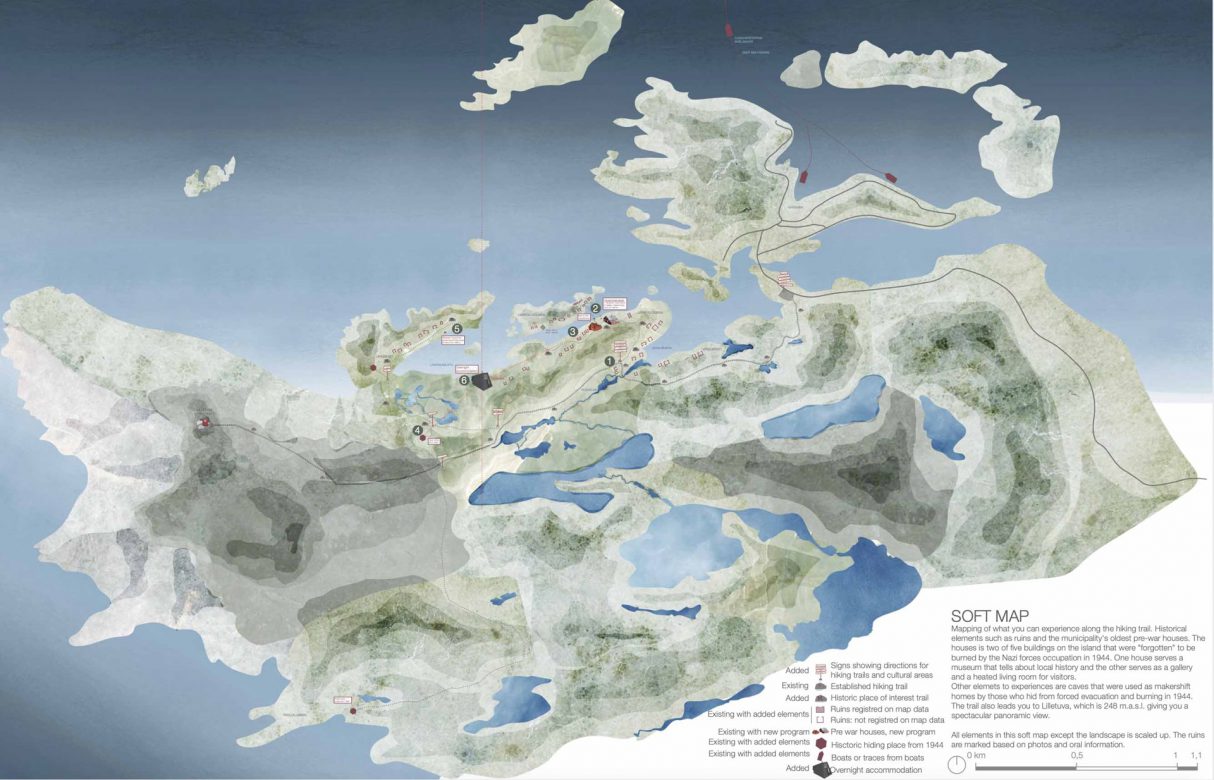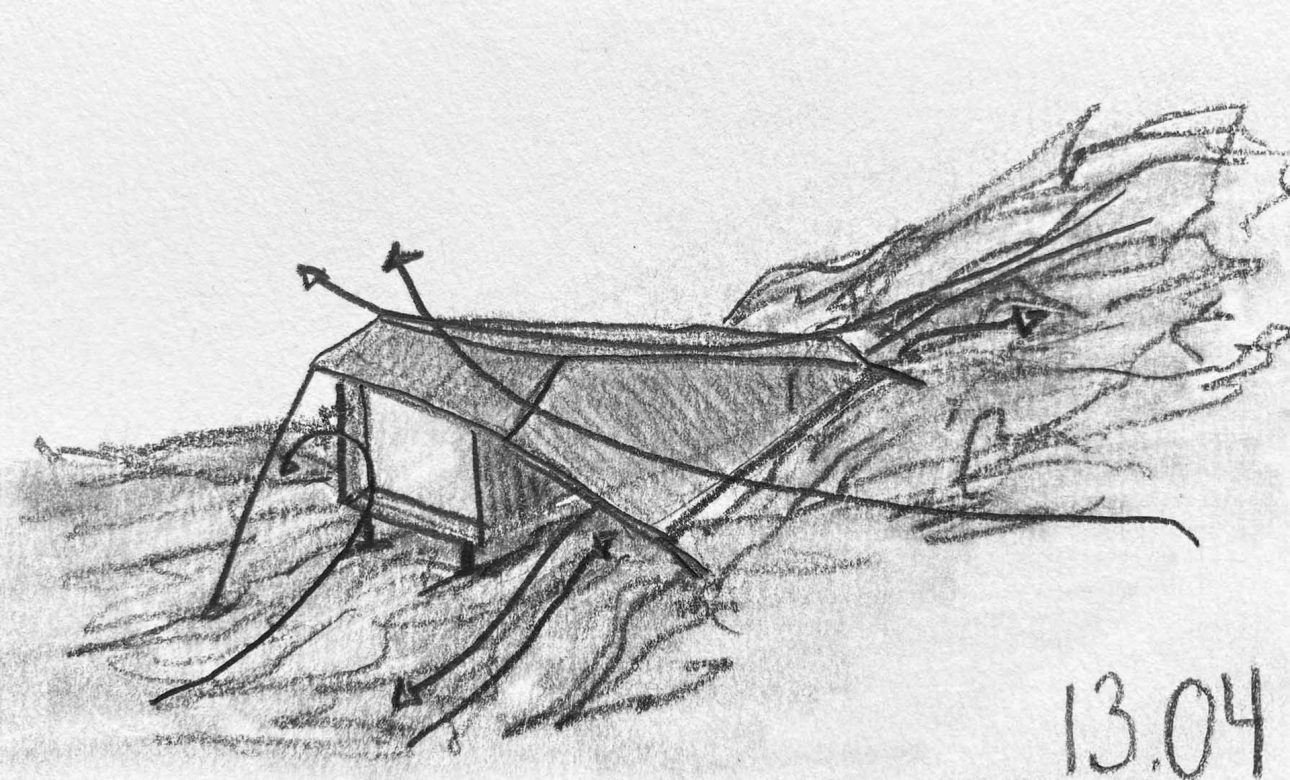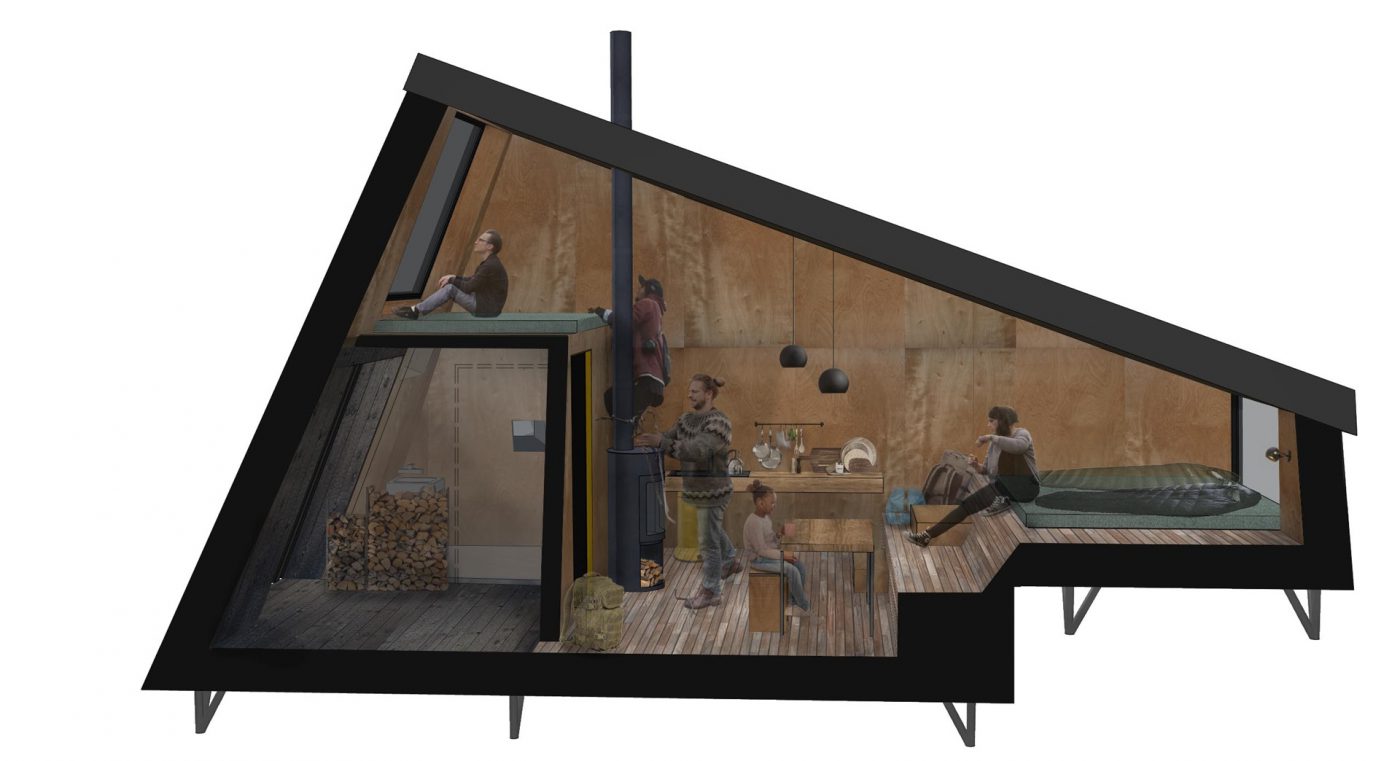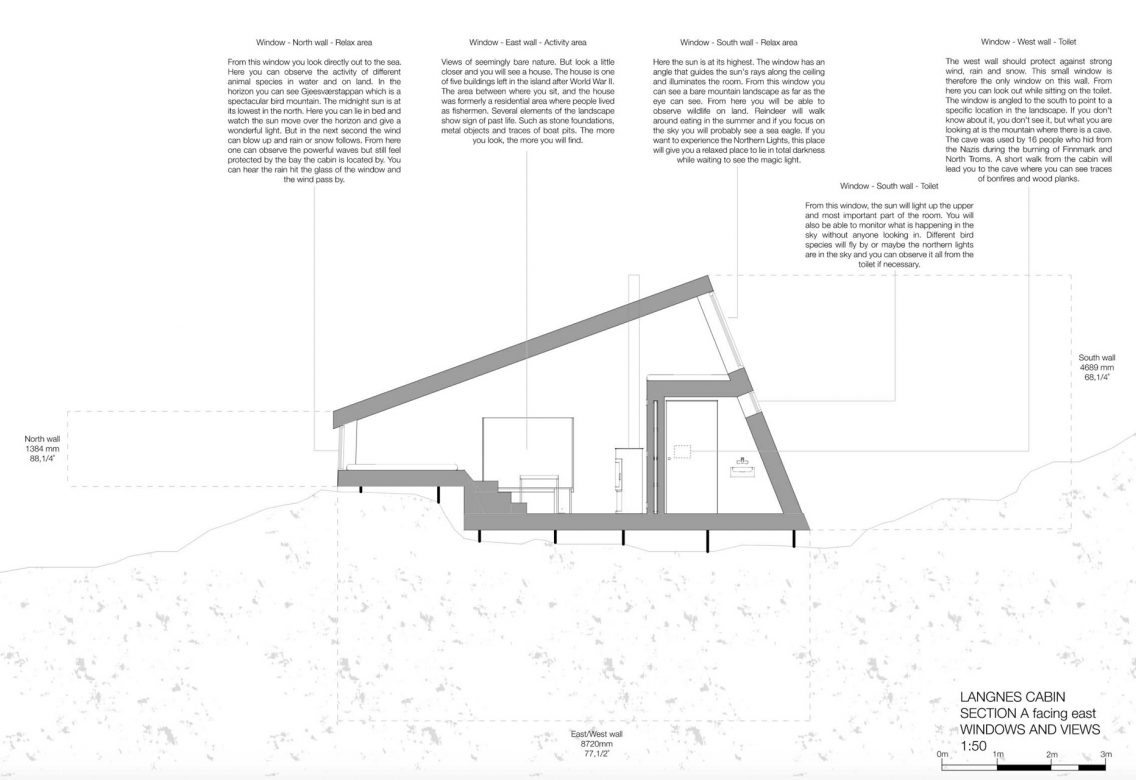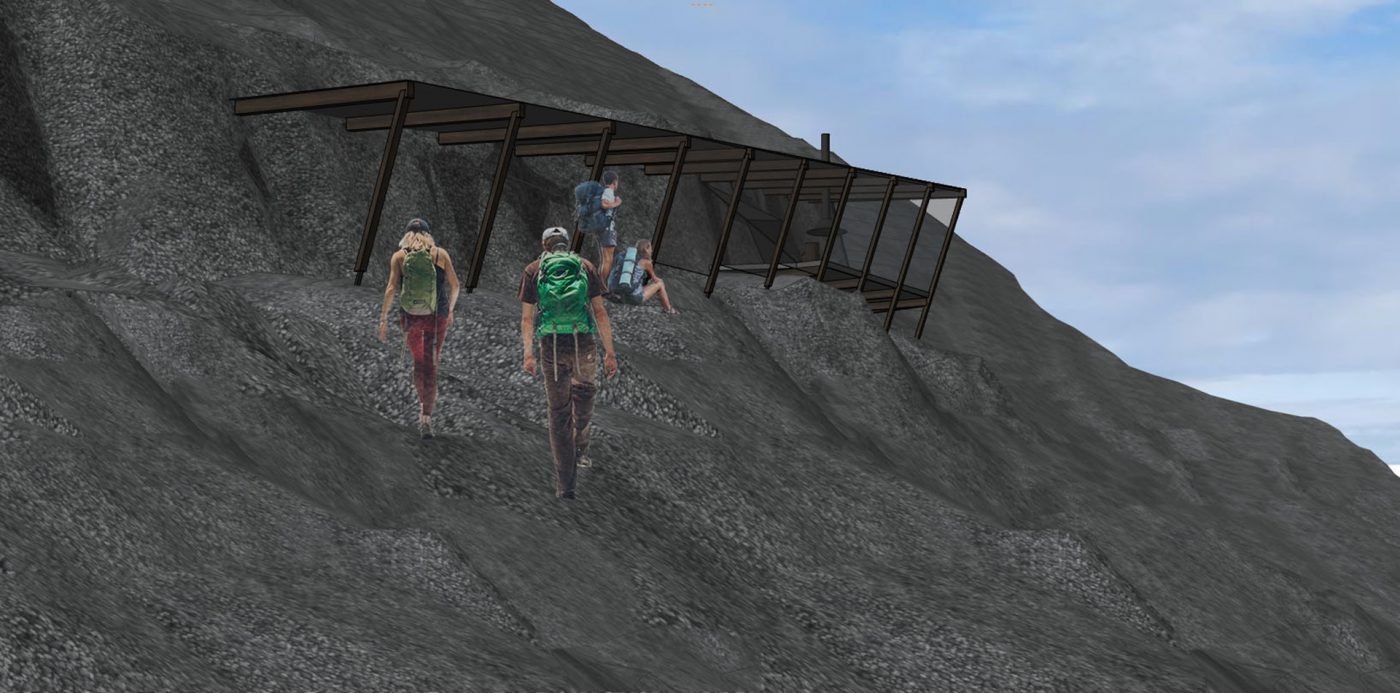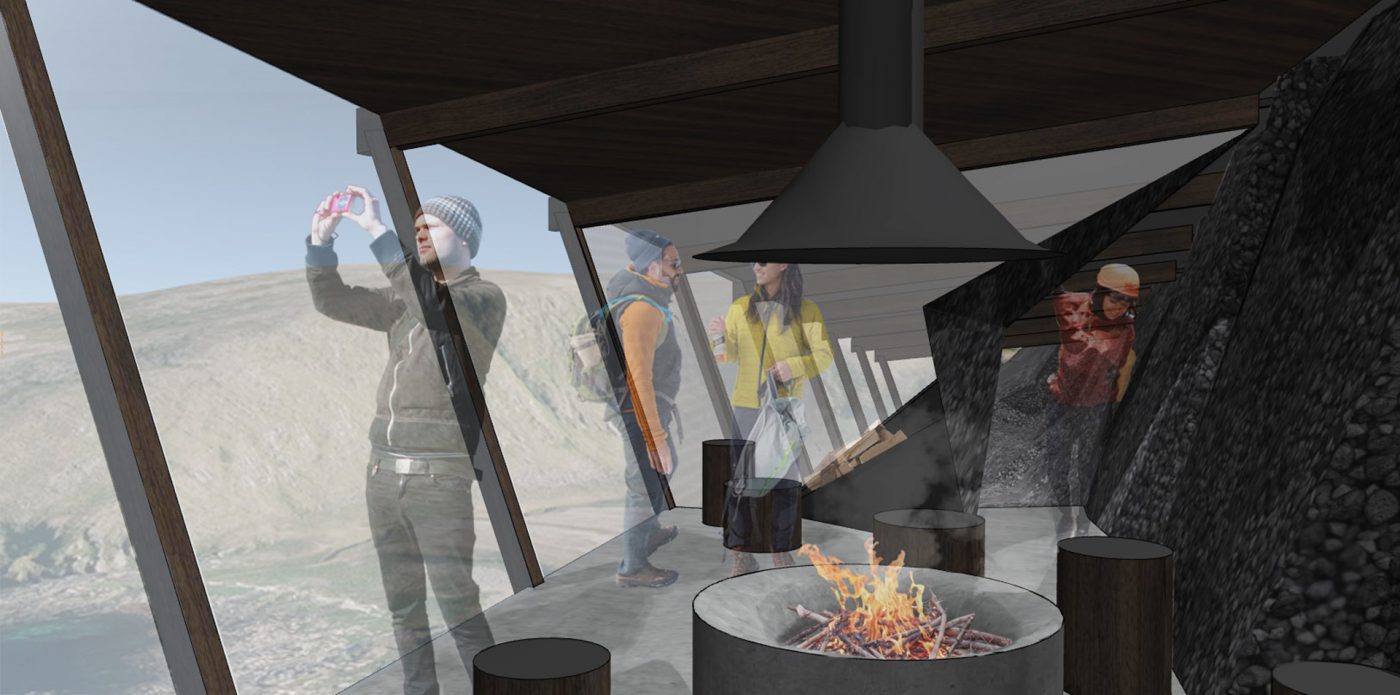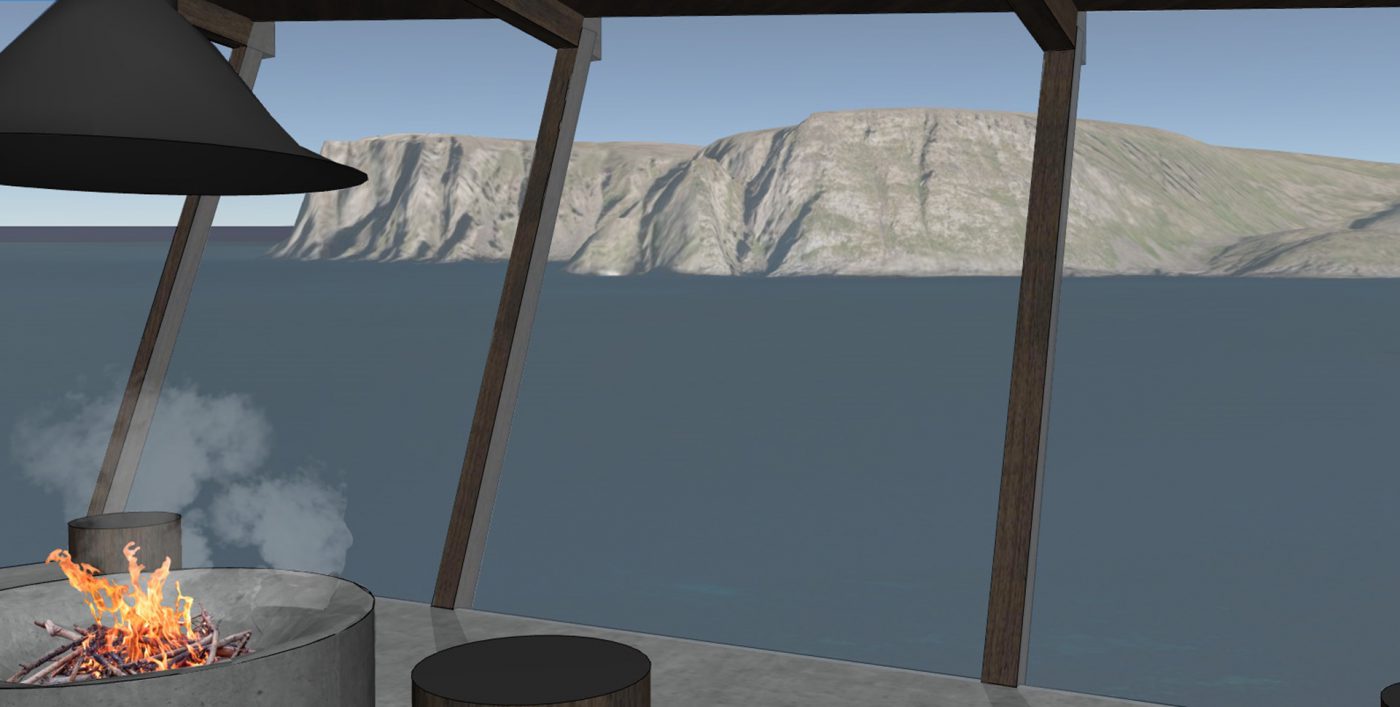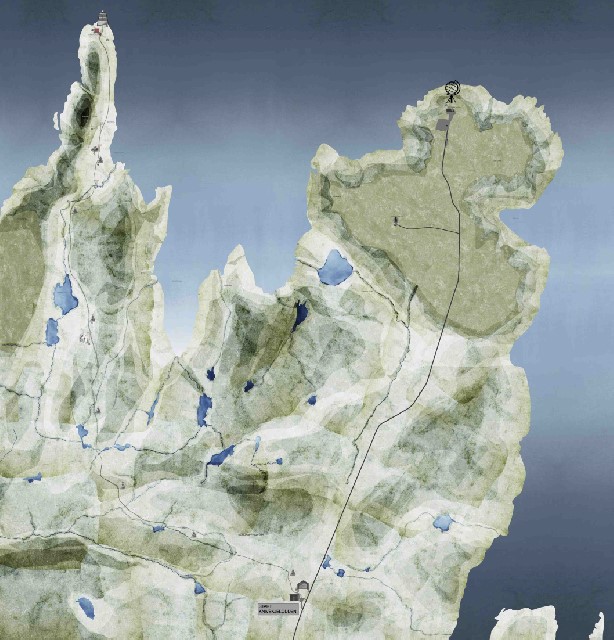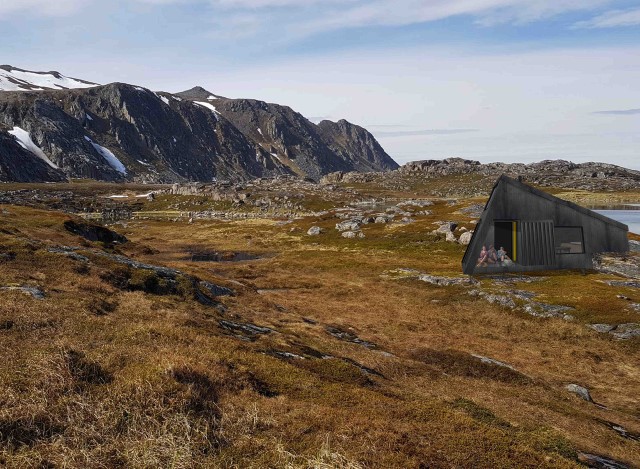
The foundation of the diploma is a thorough analysis based on interviews with local experts, review of relevant literature, a physical field trip, a written essay, gathering of maps and photos, production of sketches and more. The analysis has resulted in two final proposals, one as an accommodation for overnight stays and the other as a small shelter for hikers. During interviews with locals, two specific locations emerged: Langnes and Knivskjelodden.
KNIVSKJELODDEN: Knivskjelodden is a rock formation on the northern part of the island, and the most popular hiking destination on Magerøya. Most people think of the North Cape Plateau is the northernmost point, but in reality Knivskjelodden is about 1 600 meters farther north. This is probably one of the reasons for its popularity.
The hike is 8,6 km and is estimated to take 2,5h one way. This makes it a whole-day trip where one is out in the bare nature for at least 5 hours. This means that most people would like to have a small break during the hike, to eat, drink and enjoy the landscape. As of June 2020, there is no place to get shelter from changing and difficult weather.
During the interviews, several experts mentioned this exact spot and the need for supporting infrastructure because of the high number of yearly visitors. Because of this the proposal for this location is a shelter in which hikers can take refuge.
LANGNES: Langnes is a location on the west coast of Magerøya, close to the fishing village Gjesvær. This area is known for its rich wildlife population, specifically nesting birds on Gjesværstappan with over a million birds. This makes it a popular location for wildlife enthusiasts. Bird safaris by boat is a popular activity among tourists, but there are few places where one can actually stay the night and experience this wildlife and climate up close over time. Langnes is situated between Gjesvær and the mountain Lilletuva. It is a 2,7-kilometer-long hike which is estimated to less than 1h one way. The terrain is flat, humid and is easily accessible from both land and sea.
At the same time, the area surrounding Langnes is rich in historic locations, including ruins and signs of the destruction during World War 2. In 1944 the Germany Nazis burnt the whole region to the ground, and many locals fled for the mountains. In this location it is possible to experience two pre-war houses that the Nazis “forgot” to burn and one of the caves that was used as makeshift homes by locals during this period. For these reasons, there seems to be a possibility to construct an accommodation where tourists can experience both history and wildlife up close.
KNIVSKJELODDEN: On Knivskjelodden the proposed solution is a simple shelter primarily to be used as a day-time shelter where hikers can sit down, eat their food, enjoy the view and be protected from the weather. The shelter serves on a free-for-all basis and shall be open at all times for those in need. If necessary, it will also be possible to seek refuge for longer periods until weather conditions change for the better.
Other elements such as toilets and in- formation board by the parking area will make the shelter collaborate with the existing infrastructure and give the user a coherent experience of the area.
LANGNES: On Langnes the proposed solution is a small accommodation with facilities for overnight stays for small groups of people. The accommodation is to be served on a book-to-use, short time basis.
The objective is to locate it close to historic sites, but at the same time close to wildlife populations without causing disturbance to animals or cause harm to the historic locations or nature. On this basis, users are able to experience the unique wildlife and history during an overnight stay.
Some of the historical elements will be clarified though signs. The pre-war ho- uses will serve a museum, gallery and toilets. The intention is to make the area available to experience whether one is a shelter-visitor or a hiker for the day.
